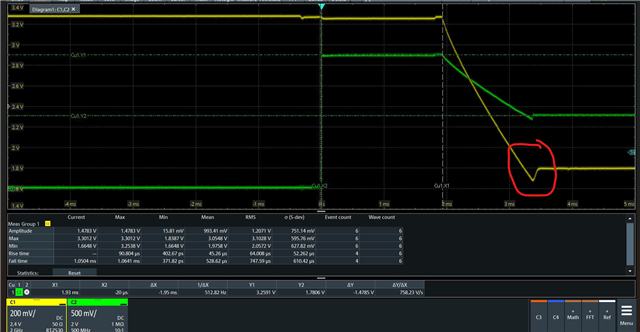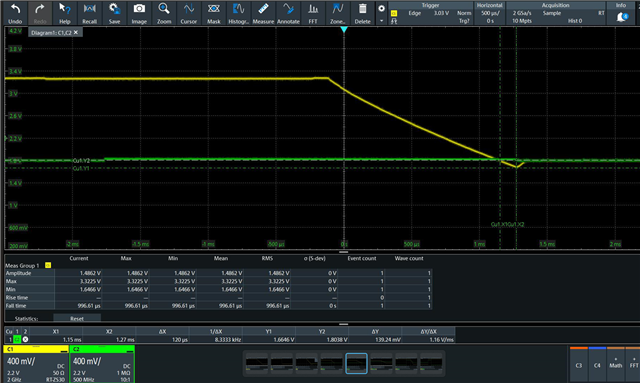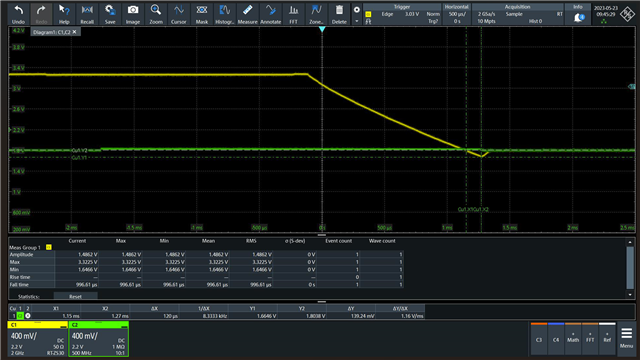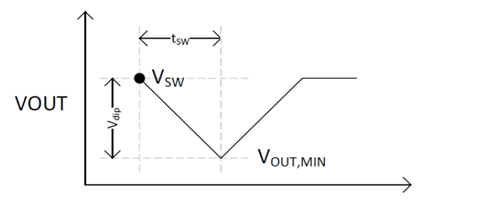Other Parts Discussed in Thread: TPS2116, TPS2117
Hi!
I am using two TPS22917 to switch between internal/external power supply at 2 different levels 1.8V/3.3V. One TPS22917 is connected to internal buck to generate 1V8. The other one is connected to an external PS that provides 3.3V. The output of both switches are connected together and are used to power VDD on an MCU. We have big capacitors (22uF) at the output (VDD). The problem I have is that when switching from 3V3 external to 1V8 internal we have a dip (brownout) that goes under the reset level of the MCU (1.7V). Why is this happening? My guess is that the reverse current protection gets triggered and blocks the input of the 1V8 until VOUT goes under 1V8 and then it takes a while to re-enable itself giving time to the output capacitors to discharge under the 1.7V but I am not so sure of this looking at the datasheet. Any ideas of what can it be and how to solve it?
Thanks.
Figure1: Yellow line is VOUT and green line is ON.
Figure 2: Yellow line is VOUT and green line is the output of the internal buck (1V8).







